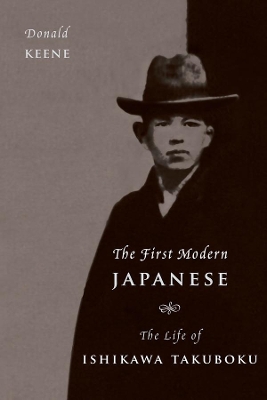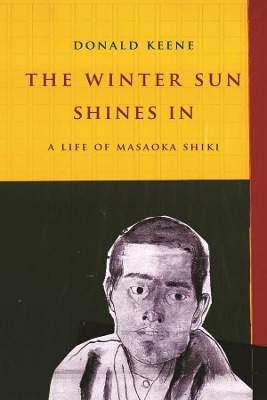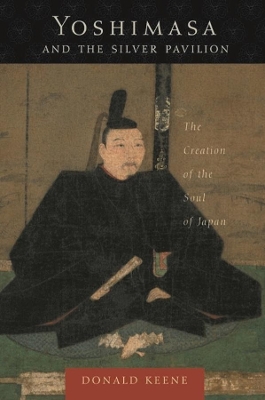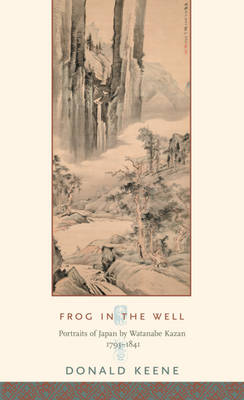Asia Perspectives: History, Society, and Culture
5 total works
Many books in Japanese have been devoted to the poet and critic Ishikawa Takuboku (1886-1912). Although he died at the age of twenty-six and wrote many of his best-known poems in the space of a few years, his name is familiar to every literate Japanese. Takuboku's early death added to the sad romance of the unhappy poet, but there has been no satisfactory biography of his life or career, even in Japanese, and only a small part of his writings have been translated. His mature poetry was based on the work of no predecessor, and he left no disciples. Takuboku stands unique. Takuboku's most popular poems, especially those with a humorous overlay, are often read and memorized, but his diaries and letters, though less familiar, contain rich and vivid glimpses of the poet's thoughts and experiences. They reflect the outlook of an unconstrained man who at times behaved in a startling or even shocking manner. Despite his misdemeanors, Takuboku is regarded as a national poet, all but a saint to his admirers, especially in the regions of Japan where he lived. His refusal to conform to the Japan of the time drove him in striking directions and ranked him as the first poet of the new Japan.
Rather than resist the vast social and cultural changes sweeping Japan in the nineteenth century, the poet Masaoka Shiki (1867-1902) instead incorporated new Western influences into his country's native haiku and tanka verse. By reinvigorating these traditional forms, Shiki released them from outdated conventions and made them more responsive to newer trends in artistic expression. Altogether, his reforms made the haiku Japan's most influential modern cultural export. Using extensive readings of Shiki's own writings and accounts of the poet by his contemporaries and family, Donald Keene charts Shiki's revolutionary (and often contradictory) experiments with haiku and tanka, a dynamic process that made the survival of these traditional genres possible in a globalizing world. Keene particularly highlights random incidents and encounters in his impressionistic portrait of this tragically young life, moments that elicited significant shifts and discoveries in Shiki's work.
The push and pull of a profoundly changing society is vividly felt in Keene's narrative, which also includes sharp observations of other recognizable characters, such as the famous novelist and critic Natsume Soseki. In addition, Keene reflects on his own personal relationship with Shiki's work, further developing the nuanced, deeply felt dimensions of its power.
The push and pull of a profoundly changing society is vividly felt in Keene's narrative, which also includes sharp observations of other recognizable characters, such as the famous novelist and critic Natsume Soseki. In addition, Keene reflects on his own personal relationship with Shiki's work, further developing the nuanced, deeply felt dimensions of its power.
The attack on Pearl Harbor, which precipitated the Greater East Asia War and its initial triumphs, aroused pride and a host of other emotions among the Japanese people. Yet the single year in which Japanese forces occupied territory from Alaska to Indonesia was followed by three years of terrible defeat. Nevertheless, until the shattering end of the war, many Japanese continued to believe in the invincibility of their country. But in the diaries of well-known writers--including Nagai Kafu, Takami Jun, Yamada Futaru, and Hirabayashi Taiko--and the scholar Watanabe Kazuo, varying doubts were vividly, though privately, expressed. Donald Keene, renowned scholar of Japan, selects from these diaries, some written by authors he knew well. Their revelations were sometimes poignant, sometimes shocking to Keene. Ito Sei's fervent patriotism and even claims of racial superiority stand in stark contrast to the soft-spoken, kindly man Keene knew. Weaving archival materials with personal recollections and the intimate accounts themselves, Keene reproduces the passions aroused during the war and the sharply contrasting reactions in the year following Japan's surrender.
Whether detailed or fragmentary, these entries communicate the reality of false victory and all-too-real defeat.
Whether detailed or fragmentary, these entries communicate the reality of false victory and all-too-real defeat.
Yoshimasa may have been the worst shogun ever to rule Japan. He was a failure as a soldier, incompetent at dealing with state business, and dominated by his wife. But his influence on the cultural life of Japan was unparalleled. According to Donald Keene, Yoshimasa was the only shogun to leave a lasting heritage for the entire Japanese people. Today Yoshimasa is remembered primarily as the builder of the Temple of the Silver Pavilion and as the ruler at the time of the Onin War (1467-1477), after which the authority of the shogun all but disappeared. Unable to control the daimyos-provincial military governors-he abandoned politics and devoted himself to the quest for beauty. It was then, after Yoshimasa resigned as shogun and made his home in the mountain retreat now known as the Silver Pavilion, that his aesthetic taste came to define that of the Japanese: the no theater flourished, Japanese gardens were developed, and the tea ceremony had its origins in a small room at the Silver Pavilion. Flower arrangement, ink painting, and shoin-zukuri architecture began or became of major importance under Yoshimasa.
Poets introduced their often barely literate warlord-hosts to the literary masterpieces of the past and taught them how to compose poetry. Even the most barbarous warlord came to want the trappings of culture that would enable him to feel like a civilized man. Yoshimasa and the Silver Pavilion gives this long-neglected but critical period in Japanese history the thorough treatment it deserves.
Poets introduced their often barely literate warlord-hosts to the literary masterpieces of the past and taught them how to compose poetry. Even the most barbarous warlord came to want the trappings of culture that would enable him to feel like a civilized man. Yoshimasa and the Silver Pavilion gives this long-neglected but critical period in Japanese history the thorough treatment it deserves.
Frog in the Well is a vivid and revealing account of Watanabe Kazan, one of the most important intellectuals of the late Tokugawa period. From his impoverished upbringing to his tragic suicide in exile, Kazan's life and work reflected a turbulent period in Japan's history. He was a famous artist, a Confucian scholar, a student of Western culture, a samurai, and a critic of the shogunate who, nevertheless, felt compelled to kill himself for fear that he had caused his lord anxiety. During this period, a typical Japanese scholar or artist refused to acknowledge the outside world, much like a "frog in the well that knows nothing of the ocean," but Kazan actively sought out Western learning. He appreciated European civilization and bought every scrap of European art that was available in Japan. He became a painter to help his family out of poverty and, by employing the artistic techniques of the West, achieved great success with his realistic and stylistically advanced portraits. Although he remained a nationalist committed to the old ways, Kazan called on the shogunate to learn from the West or risk disaster.
He strove to improve the agricultural and economic conditions of his province and reinforce its defenses, but his criticisms and warnings about possible coastal invasions ultimately led to his arrest and exile. Frog in the Well is the first full-length biography of Kazan in English, and, in telling his life's story, renowned scholar Donald Keene paints a fascinating portrait of the social and intellectual milieus of the late Tokugawa period. Richly illustrated with Kazan's paintings, Frog in the Well illuminates a life that is emblematic of the cultural crises affecting Japan in the years before revolution.
He strove to improve the agricultural and economic conditions of his province and reinforce its defenses, but his criticisms and warnings about possible coastal invasions ultimately led to his arrest and exile. Frog in the Well is the first full-length biography of Kazan in English, and, in telling his life's story, renowned scholar Donald Keene paints a fascinating portrait of the social and intellectual milieus of the late Tokugawa period. Richly illustrated with Kazan's paintings, Frog in the Well illuminates a life that is emblematic of the cultural crises affecting Japan in the years before revolution.




